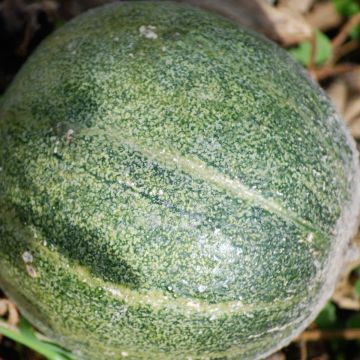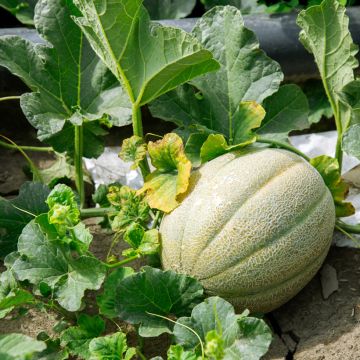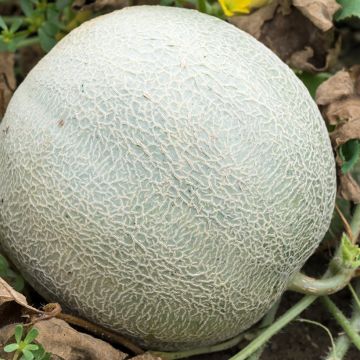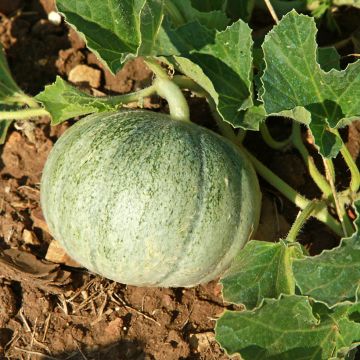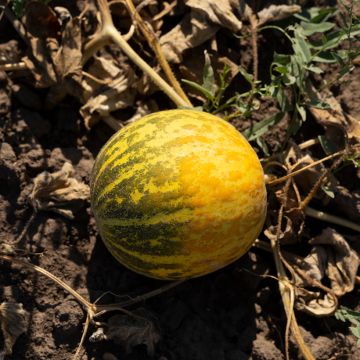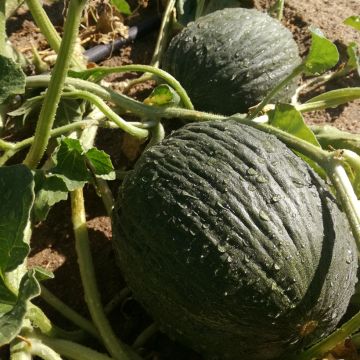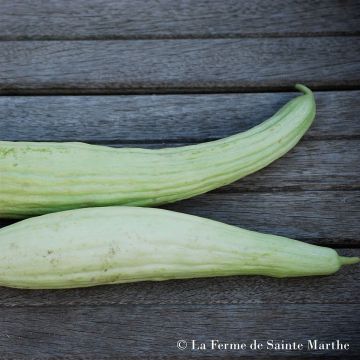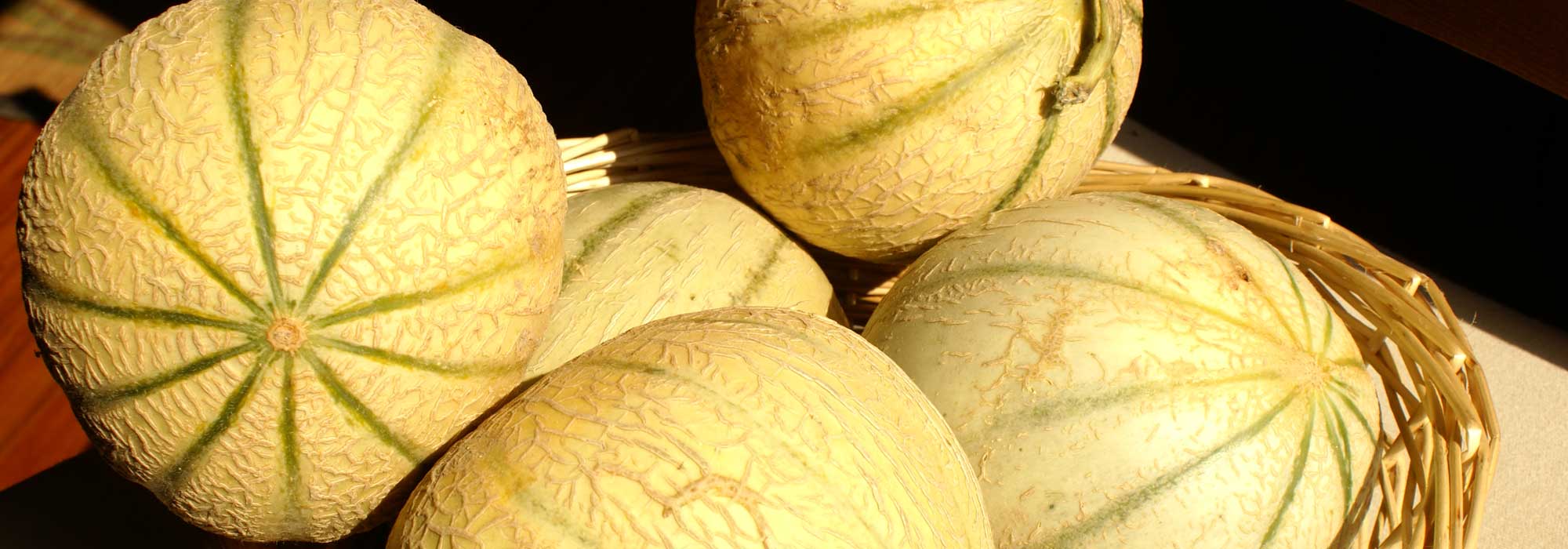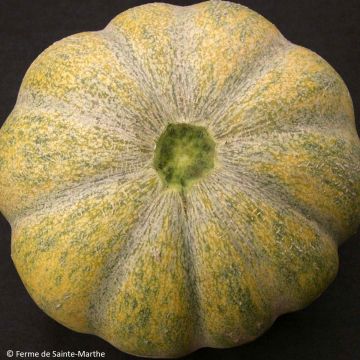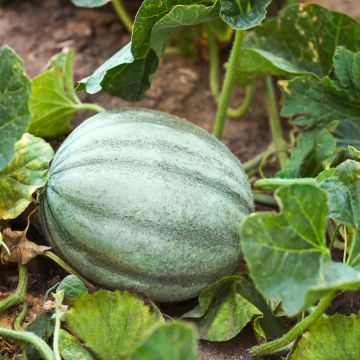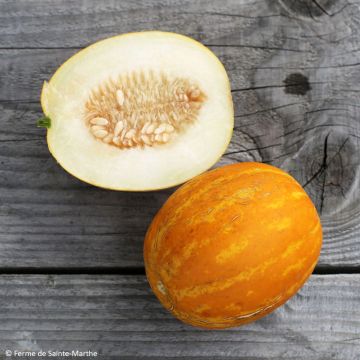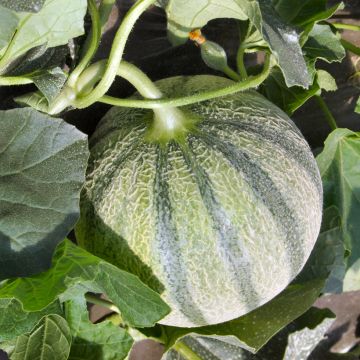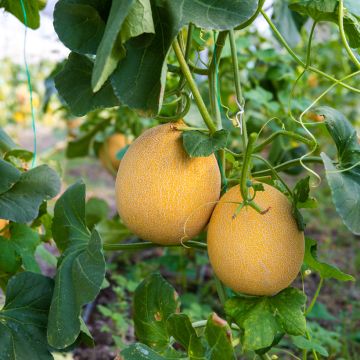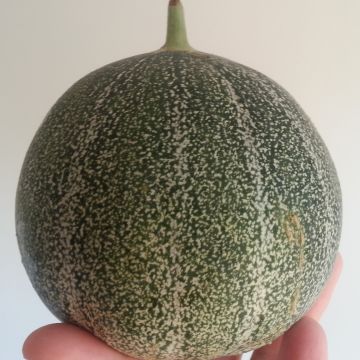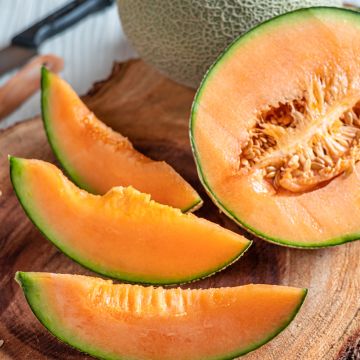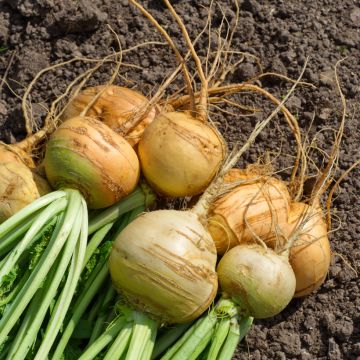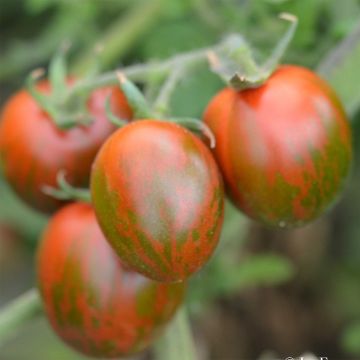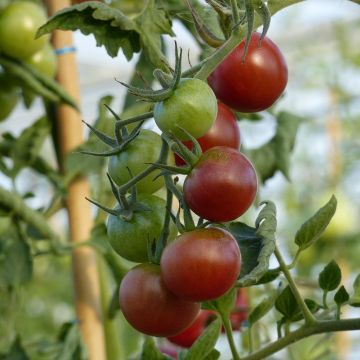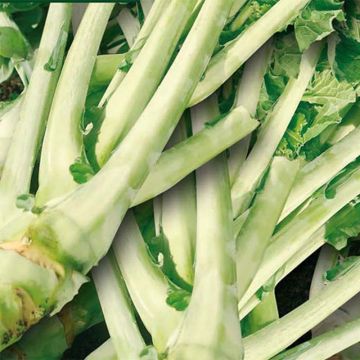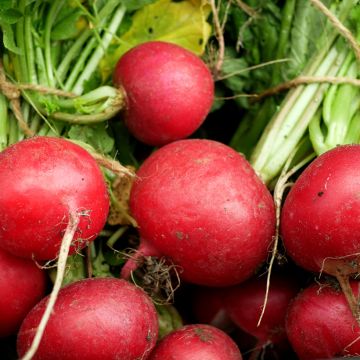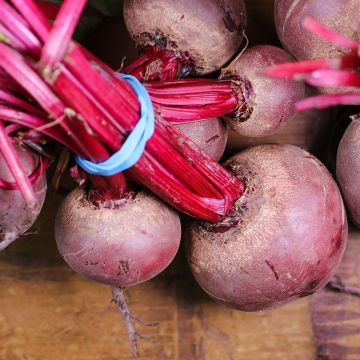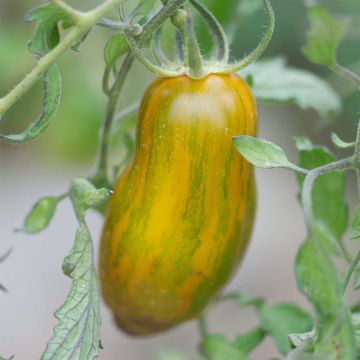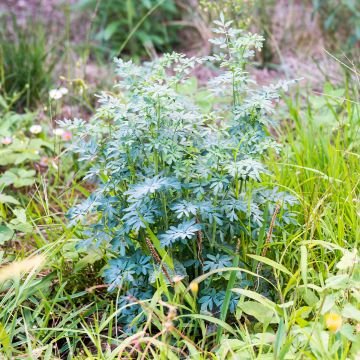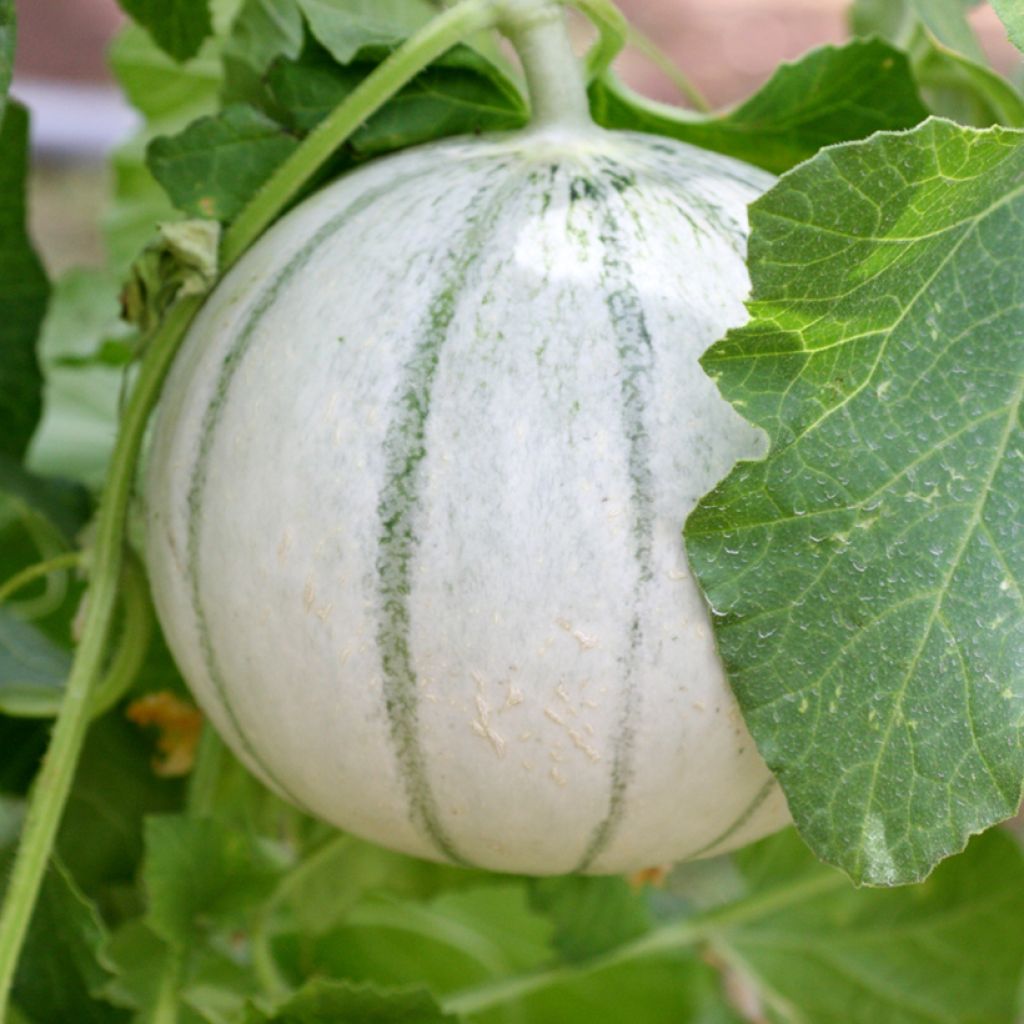

Melon Alienor - Cucumis melo
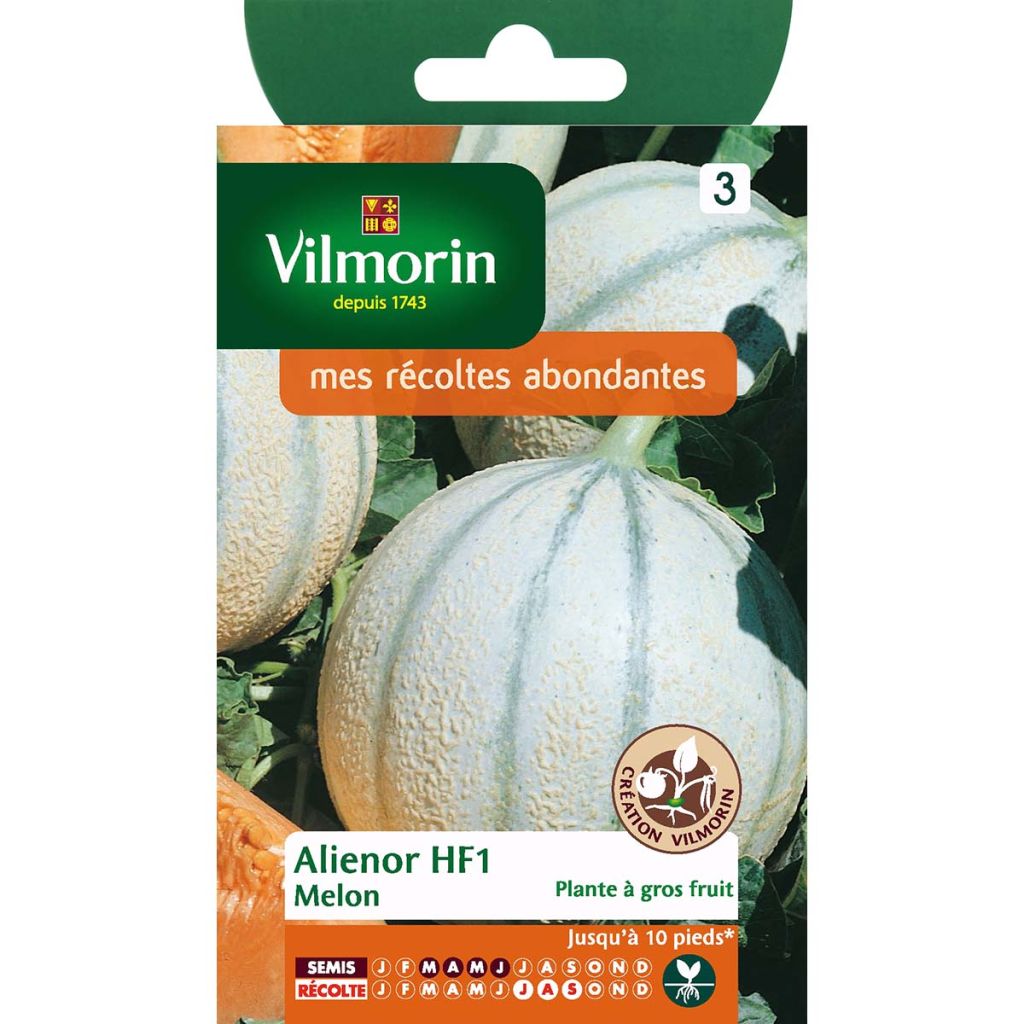

Melon Alienor - Cucumis melo
Melon Alienor - Cucumis melo
Cucumis melo Alienor
Muskmelon, Cantaloupe, Melon
Special offer!
Receive a €20 voucher for any order over €90 (excluding delivery costs, credit notes, and plastic-free options)!
1- Add your favorite plants to your cart.
2- Once you have reached €90, confirm your order (you can even choose the delivery date!).
3- As soon as your order is shipped, you will receive an email containing your voucher code, valid for 3 months (90 days).
Your voucher is unique and can only be used once, for any order with a minimum value of €20, excluding delivery costs.
Can be combined with other current offers, non-divisible and non-refundable.
Why not try an alternative variety in stock?
View all →This plant carries a 6 months recovery warranty
More information
We guarantee the quality of our plants for a full growing cycle, and will replace at our expense any plant that fails to recover under normal climatic and planting conditions.
Description
The Alienor F1 melon is a variety that produces large melons, of the charentais type, with rough skin. Their flesh is tasty and sweet. This variety is resistant to diseases. It is sown in spring under cover and harvested from July to September.
The melon is an annual herbaceous plant, creeping, from the Cucurbitaceae family. It is a round or elongated fruit, with a smooth, ribbed or reticulated skin. The very watery flesh can be green, white, yellow or orange.
It is consumed raw as an appetizer or dessert, but also in sorbets, jams, compotes or syrup. The small melons removed during thinning and various pruning can be prepared as pickles, marinated in vinegar and accompanied by aromatics. Refreshing and diuretic, the melon is rich in trace elements and vitamins A, B, and C.
Harvesting : The melon is ready to be harvested when it emits a sweet smell and a small crack appears around the stem. Cut it with pruning shears. The harvest takes place 4 to 5 months after sowing, from July to September approximately.
Storage : The melon can be stored for a few days (up to 5 days) in a dry and well-ventilated place, on racks for example. If it has been opened or has suffered a shock, you can freeze it (cut the flesh into pieces and moisten it with lemon juice).
Gardener's tip : Place a slate or a tile under the fruit. It will no longer be in direct contact with the ground, thus avoiding it from rotting due to humidity. Also, consider mulching around the plants, especially during the peak of summer, to keep the soil cool.
Harvest
Plant habit
Foliage
Botanical data
Cucumis
melo
Alienor
Cucurbitaceae
Muskmelon, Cantaloupe, Melon
Cultivar or hybrid
Annual
Other Melon seeds
View all →Planting and care
Soil preparation: Melons require nutrient-rich soil and plenty of warmth for successful fruiting. Choose a location that is both sunny and sheltered. Melon plants thrive in cool, well-drained soil. Loosen the soil to a depth of about ten centimeters without turning it over. Add well-decomposed organic compost. If the soil doesn't drain well, you can create small mounds for each plant.
Sowing under glass: In regions with less sunshine, it is advisable to sow melon seeds on a warm bed in a greenhouse before transplanting them into open ground. Starting from the end of March, fill pots (minimum 8 cm (3in) in diameter) with special seed compost and plant 2 or 3 melon seeds per pot, with the pointed end facing downwards to facilitate root development. Moisten the soil, which should remain moderately damp. The seeds usually germinate within a week. When the plants have three true leaves, thin them out to keep only one plant per pot. Depending on the sowing date, you can either transplant them into open ground if the soil is warm enough and the risk of frost has passed, or keep one plant in each pot until the soil warms up. When transplanting into open ground, leave a spacing of 1 meter (3 feet) between rows and between plants in a row.
Sowing in open ground: In southern regions or on the Atlantic coast, it is possible to sow melon seeds directly in open ground. Make sure the soil is sufficiently warm beforehand. Sow two to three seeds in holes, with the pointed end facing downwards, while maintaining a spacing of 1 meter (3 feet) between rows and between plants in a row. Moisten the soil, which should remain moderately damp. When the plants have three true leaves, keep the strongest one. This sowing can be done in May, once the risk of frost has passed. Use cloches or mini tunnels if necessary.
Melons require regular watering (about twice a week in summer, depending on the climate). Be careful to water only the base of the plant and not the leaves to prevent powdery mildew. Regularly weed and hoe.
Melons are quite "demanding", so you can follow them with peas or broad beans.
Seedlings
Care
Intended location
Planting & care advice
This item has not been reviewed yet - be the first to leave a review about it.
Similar products
Haven't found what you were looking for?
Hardiness is the lowest winter temperature a plant can endure without suffering serious damage or even dying. However, hardiness is affected by location (a sheltered area, such as a patio), protection (winter cover) and soil type (hardiness is improved by well-drained soil).

Photo Sharing Terms & Conditions
In order to encourage gardeners to interact and share their experiences, Promesse de fleurs offers various media enabling content to be uploaded onto its Site - in particular via the ‘Photo sharing’ module.
The User agrees to refrain from:
- Posting any content that is illegal, prejudicial, insulting, racist, inciteful to hatred, revisionist, contrary to public decency, that infringes on privacy or on the privacy rights of third parties, in particular the publicity rights of persons and goods, intellectual property rights, or the right to privacy.
- Submitting content on behalf of a third party;
- Impersonate the identity of a third party and/or publish any personal information about a third party;
In general, the User undertakes to refrain from any unethical behaviour.
All Content (in particular text, comments, files, images, photos, videos, creative works, etc.), which may be subject to property or intellectual property rights, image or other private rights, shall remain the property of the User, subject to the limited rights granted by the terms of the licence granted by Promesse de fleurs as stated below. Users are at liberty to publish or not to publish such Content on the Site, notably via the ‘Photo Sharing’ facility, and accept that this Content shall be made public and freely accessible, notably on the Internet.
Users further acknowledge, undertake to have ,and guarantee that they hold all necessary rights and permissions to publish such material on the Site, in particular with regard to the legislation in force pertaining to any privacy, property, intellectual property, image, or contractual rights, or rights of any other nature. By publishing such Content on the Site, Users acknowledge accepting full liability as publishers of the Content within the meaning of the law, and grant Promesse de fleurs, free of charge, an inclusive, worldwide licence for the said Content for the entire duration of its publication, including all reproduction, representation, up/downloading, displaying, performing, transmission, and storage rights.
Users also grant permission for their name to be linked to the Content and accept that this link may not always be made available.
By engaging in posting material, Users consent to their Content becoming automatically accessible on the Internet, in particular on other sites and/or blogs and/or web pages of the Promesse de fleurs site, including in particular social pages and the Promesse de fleurs catalogue.
Users may secure the removal of entrusted content free of charge by issuing a simple request via our contact form.
The flowering period indicated on our website applies to countries and regions located in USDA zone 8 (France, the United Kingdom, Ireland, the Netherlands, etc.)
It will vary according to where you live:
- In zones 9 to 10 (Italy, Spain, Greece, etc.), flowering will occur about 2 to 4 weeks earlier.
- In zones 6 to 7 (Germany, Poland, Slovenia, and lower mountainous regions), flowering will be delayed by 2 to 3 weeks.
- In zone 5 (Central Europe, Scandinavia), blooming will be delayed by 3 to 5 weeks.
In temperate climates, pruning of spring-flowering shrubs (forsythia, spireas, etc.) should be done just after flowering.
Pruning of summer-flowering shrubs (Indian Lilac, Perovskia, etc.) can be done in winter or spring.
In cold regions as well as with frost-sensitive plants, avoid pruning too early when severe frosts may still occur.
The planting period indicated on our website applies to countries and regions located in USDA zone 8 (France, United Kingdom, Ireland, Netherlands).
It will vary according to where you live:
- In Mediterranean zones (Marseille, Madrid, Milan, etc.), autumn and winter are the best planting periods.
- In continental zones (Strasbourg, Munich, Vienna, etc.), delay planting by 2 to 3 weeks in spring and bring it forward by 2 to 4 weeks in autumn.
- In mountainous regions (the Alps, Pyrenees, Carpathians, etc.), it is best to plant in late spring (May-June) or late summer (August-September).
The harvesting period indicated on our website applies to countries and regions in USDA zone 8 (France, England, Ireland, the Netherlands).
In colder areas (Scandinavia, Poland, Austria...) fruit and vegetable harvests are likely to be delayed by 3-4 weeks.
In warmer areas (Italy, Spain, Greece, etc.), harvesting will probably take place earlier, depending on weather conditions.
The sowing periods indicated on our website apply to countries and regions within USDA Zone 8 (France, UK, Ireland, Netherlands).
In colder areas (Scandinavia, Poland, Austria...), delay any outdoor sowing by 3-4 weeks, or sow under glass.
In warmer climes (Italy, Spain, Greece, etc.), bring outdoor sowing forward by a few weeks.






























